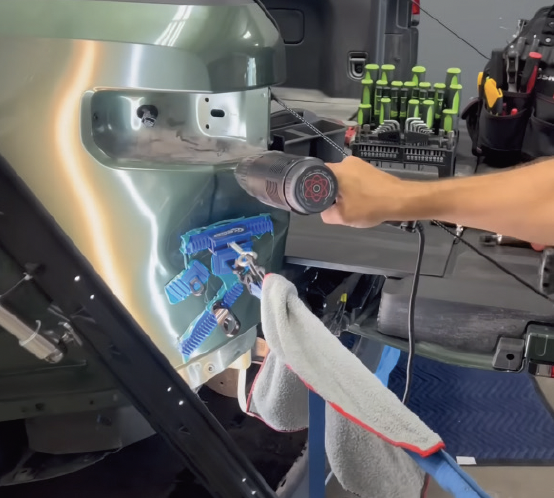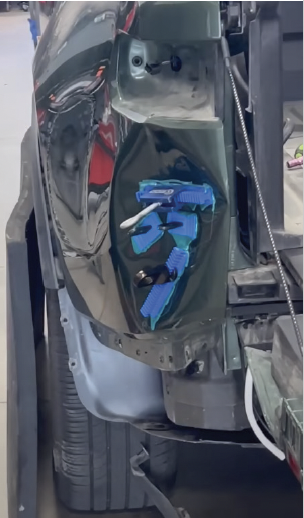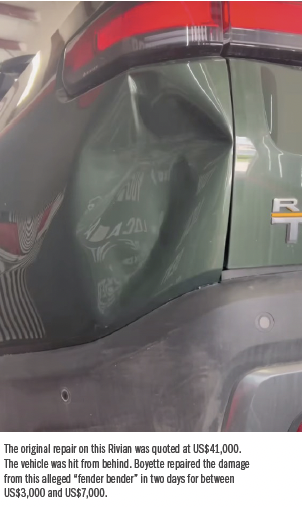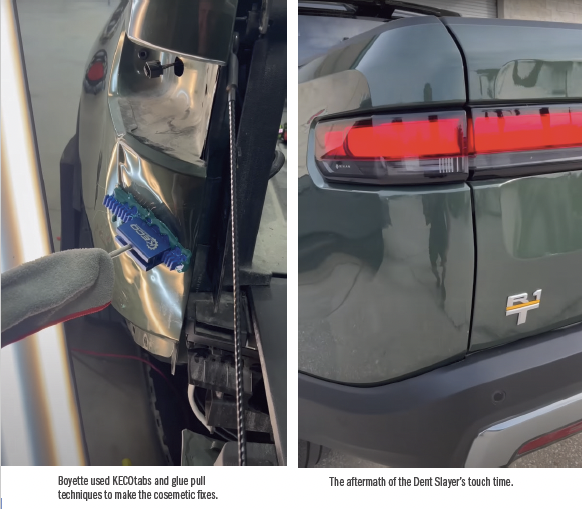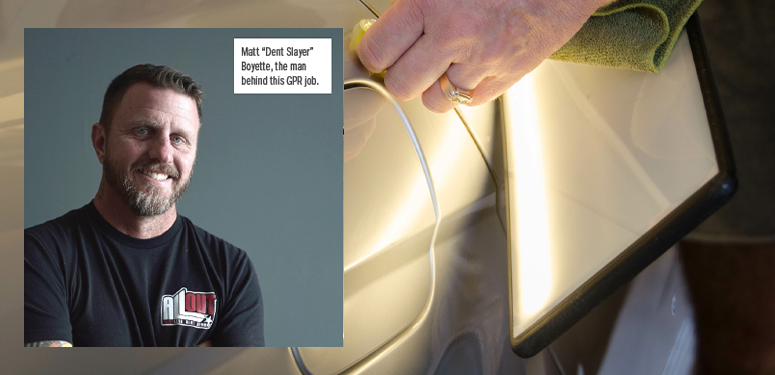DENT DEBUNKING
HOW VIABLE IS PDR?
By Sarah Perkins
It’s no secret that electric vehicles have sparked concerns in the automotive industry when it comes to manufacturing, distribution and collision repair. From fears of electric shocks to repair preparedness, electric vehicle adoption has caused a real shockwave.
One such concern that is recircuited by consumers and the industry is the belief that EV repair is more expensive than ICE models. While EVs can initially wrack up bigger repair estimates (a new Tesla can sustain more dollardamage than a $30,000 Toyota), failsafes exist to cushion costs.
According to the American Highway Loss Data Institute (HLDI) in a 2020 study, gasolinebased cars are 3 times more likely to be totaled after an accident than an EV. ICE models were also written off after 18.4 percent of collisions versus 6.1 percent for electric vehicles.
But what happens when an EV does incur hefty repair estimates? This is what one Rivian driver asked after receiving a whopping US$41,000 repair quote for what was—in the driver’s words—a “minor fender-bender.” The answer: seek out the experts. After receiving the $41,000 quote, the Rivian driver sought alternative solutions in the form of Matt “Dent Slayer” Boyette, a dent removal expert.
Upon inspection, Boyette saw that the damage to the EV extended beyond the visible dent to also include the bed, car, roof and A-pillar. Using glue-pull repair techniques to eliminate needing to remove the back glass, panoramic roof, windshield and battery pack from the vehicle, as well as having to repaint a significant portion of the vehicle’s side, Boyette was able to successfully restore the vehicle’s original form over two days.
Unlike the initial repair quote received by the driver, Boyette noted that similar repairs to the one he completed typically range between just $4,000 and $7,000.
The take-away from this story? While electric vehicles may present some costly challenges, knowing how to employ strategic repair strategies such as dentless paint repair (DPR) can show that EVs are not as costly as initial fears may suggest.
Even as technology rapidly changes, so too does the knowledge and skill of the automotive industry so that technicians can continue to provide smart, quick and cost-effective solutions to consumers that will leave them truly electrified.
